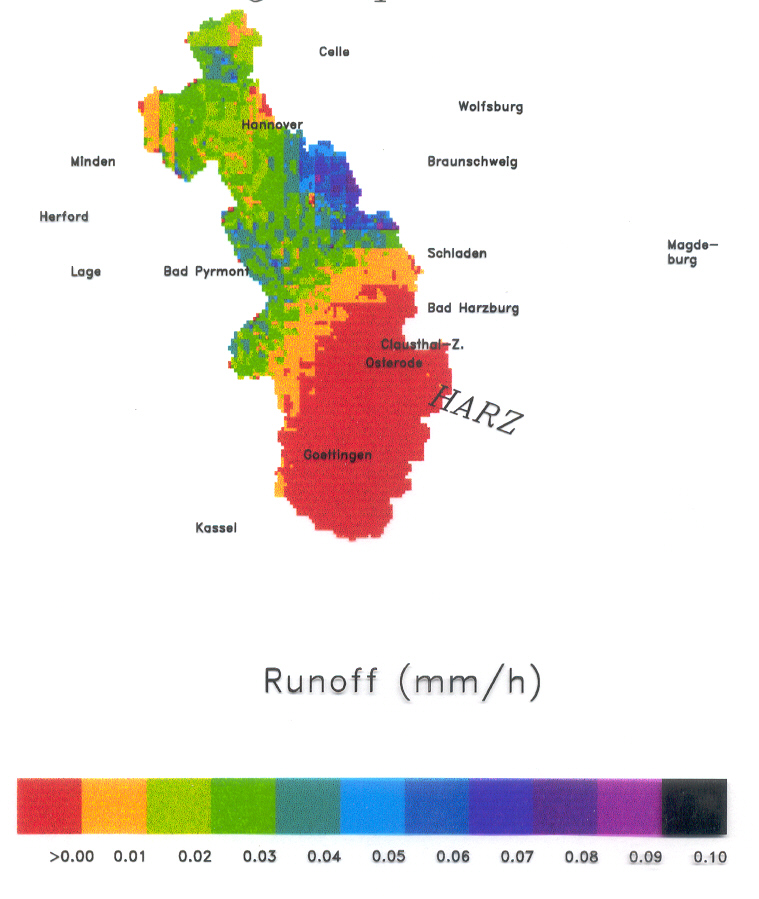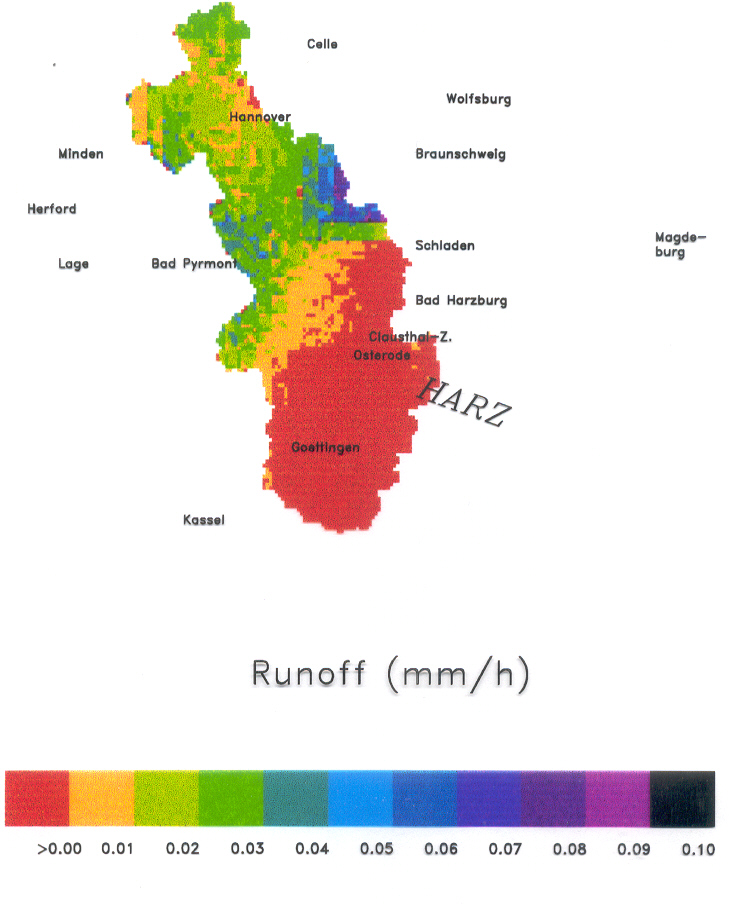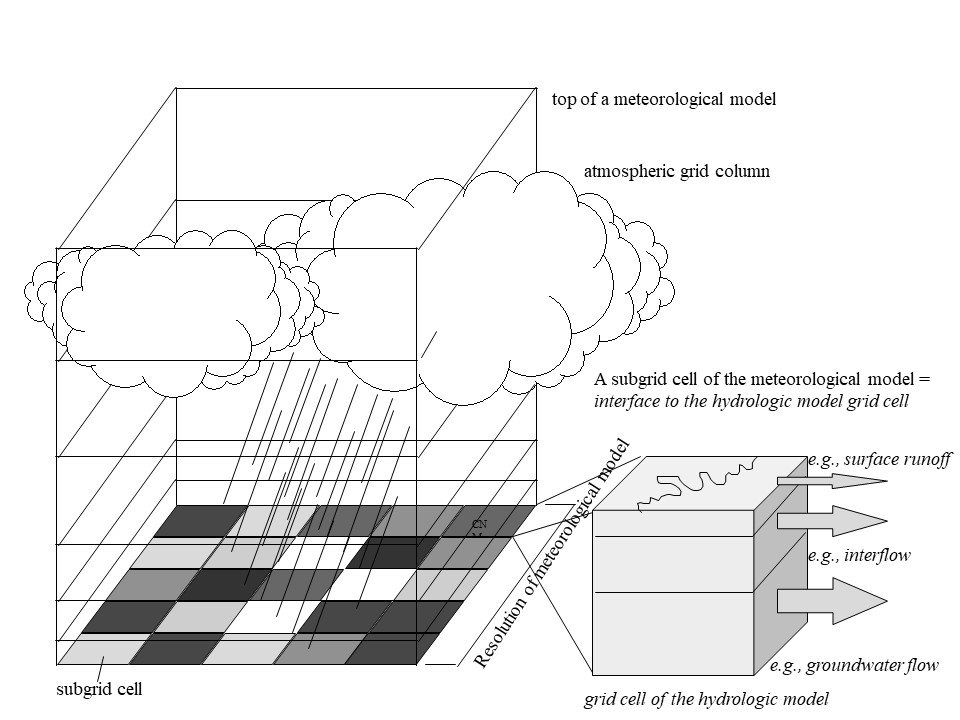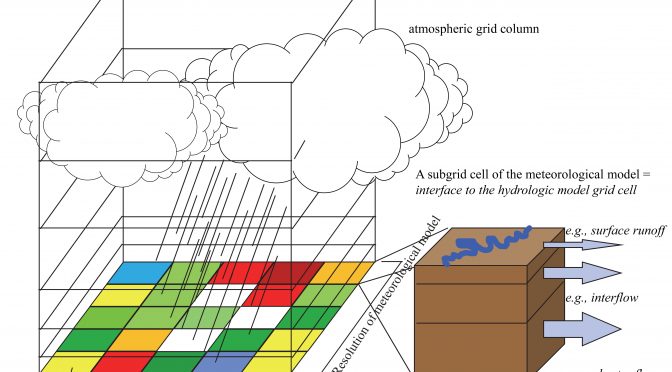Coupled Hydrometeorological Modeling
This unit gives a glimpse at coupling of meteorological and hydrological models and techniques to model the water cycle in a closed way.


Goals
The goal of this unit is to introduce the issues related to the different spatial and temporal scale of processes, and various state-of-the-art methods how to couple meteorological, land-surface, groundwater, river routing, and/or hydrological models.

After successful completion of this unit students will be able to
- Discuss the importance of scales
- Explain aggregation and disaggregation and discuss their challenges
- Distinguish different schemes to deal with surface heterogeneity and evaluate their advantages and disadvantages
- Distinguish one-way and two-way coupling and their advantages and disadvantages
- Identify hydrometeorological feedback processes and create feedback matrices to assess which fluxes and state variables have to be exchanged when coupling models (graduate students)
Students’ tasks
- Graduate students only: Read this chapter on Scale issues in Coupled Models for the Hydrological Cycle by Bronstert et al. (Eds) 2004
- All: Read this chapter on Feedbacks at the Hydrometeorological Interface in Coupled Models for the Hydrological Cycle by Bronstert et al. (Eds) 2004
- Take notes and prepare to present the material in the phone conference
- Fill out the questionnaire prior to the deadline
- Watch this video on FAQ when you had problems/many questions on the read material
- Solve the tasks assigned at your class level in this Unit 22 Applications and submit your solutions by Thursday 2355 Alaska Time
Additional Reading Material (optional, graduate student level)
Paper comparing the mosaic approach and subgrid scheme for aggregation
Paper on one- and two-way coupling of a hydrological and meteorological model
Paper on technical details for coupling of a hydrological and meteorological model
FAQ
Q: Are integrated models one-way or two-way coupled and what is the difference between them?
A: In integrated models, you have both models in the same software package and data exchange is via a so-called coupler. The coupler only exchanges data needed and converts the units if necessary. One can run an integrated model in one-way or two-way coupled mode. This means in one-way coupled mode, only the output of one model is used in the other. In other words, one models output provides the input for the other model, i.e. it drives the other model. Two-way coupled means that one model finished a timestep, it will send the output that is needed by the other model as input. While that model does do the forecast at it’s own time step till the time step of exchange is reached, the first models pauses. Once it gets the new input data it updates its fields and runs until the time step of data exchange is reached. In mesoscale meteorological models, for instance, the radiation code is only called every 5 minutes to update the temperature fields. Nevertheless, it’s two-way coupled as the new temperature, trace gas, aerosol and moisture fields affect radiation, and the radiation fluxes the temperature, chemical and moisture fields. In Earth-System Models and climate models, the radiation code is called every 20 min or even only every hour. When the models are not integrated, One model does its simulations and writes out the data. Then the other model in driven by the output that it reads in as forcing. When run in one-way coupled mode, the first model runs and the the second. When run in two-way coupled mode, the first model runs, writes out the data and stops. The second model reads in the output as input, runs, writes out the data and stops. The first model reads in the output as input data, runs, writes out the data and stops. And so on.
© 2019 Nicole Mölders | All Rights Reserved.
